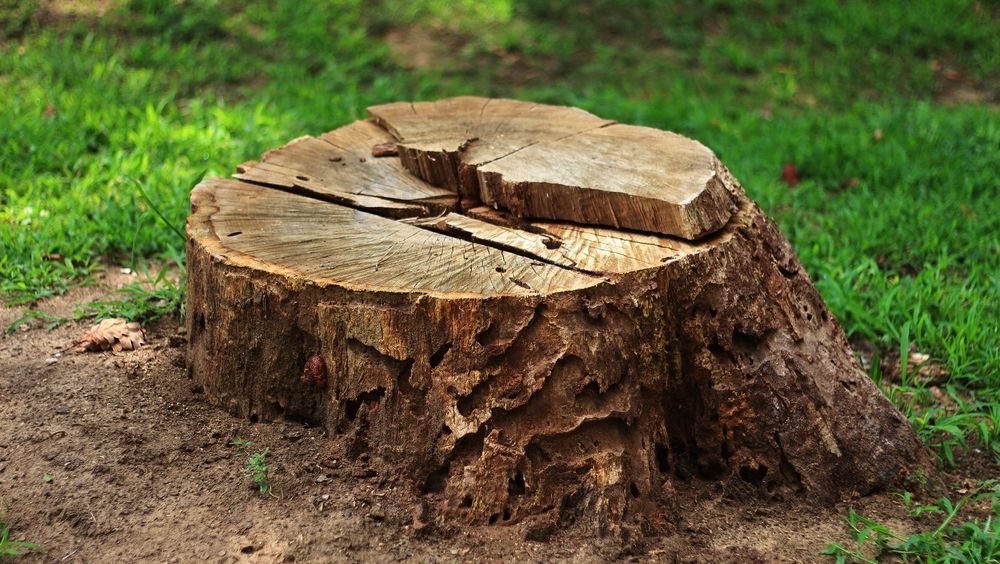
19/05/2022 0 Comments
Problems with Tree Stumps
After feeling a tree, a garden is often still left with the stump problem. In many cases, the gardeners quite like a tree stump.
We've seen many examples of inspired gardens using tree stumps as the centrepiece of following beds or using them as a make-shift shelve for garden decorations. Attaching a toy door to the stump and labelling the stump a fairy house has become particularly popular in recent years. However, in some cases, a tree stump can become a nuisance. It may get in the way of anything from a new garden shed to a fence. The underground roots can also impend the growth of other flowers. The average gardener may not be aware of other significant issues with tree roots. Today's blog will explore some of the lesser-known problems associated with tree stumps.
Tree Root Suckering
Just because a tree has been cut down doesn't necessarily mean the tree is dead—quite the contrary. While the tree may no longer be growing above ground, the same can not be said for what's happening underneath the soil.
Tree roots, and roots of shrubs, for that matter, can continue to grow. Roots can also produce what's called suckers. These suckers sprout from the root and poke through the ground as a new plant. This can be a real nuisance for the average gardener, especially when these suckers sprout between paving stones, at borders, or through pathways.
To avoid suckers, it's essential to remove the tree stump entirely or make sure the stump is completely dead after being felled. However, as the following paragraph demonstrates, a dead tree stump can create its own set of problems.
Honey Fungus on Dead Tree Stumps
Dead tree stumps can quickly become a breeding ground for honey fungus. Honey fungus is the common name given to different species of fungus. This invasive fungus spreads underground, attacking the roots of a tree or tree stump. The most common symptom is the sprouting mushrooms at the base of the plant. Like all fungi, an infestation will spread quickly, leaping from the dead roots of a stump to perennial plants.
If left untreated, this fungus can cause vast amounts of damage.
The best treatment for honey fungus is prevention. We highly recommend removing tree stumps as soon as possible.
Please see our tree stump removal page for more information on pricing and our service area.

Comments
Leave a comment